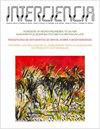Selection of embryo recipients, a real challenge in cows embryo transfer programs
IF 0.4
4区 综合性期刊
Q4 ECOLOGY
引用次数: 0
Abstract
This article comes as a response to a clinical situation that the members of our team found at an embryo transfer program. At the moment of insemination, day 7 after estrus period, a high number of untransferable recipients was found after ovaries ultrasonography. From 54 animals synchronized, just in 5 (9.25 %) cases was performed the embryo insemination. The embryo transfer was performed in cases where a corpus luteum (CL group) higher than 17 mm was found on the ovary, corpus luteum with a cavity of a maximum 10 mm and without a follicle higher than 10 mm on the ovary with the corpus luteum or on the other ovary. The rest of heifers were classified into the next groups: Hollow corpus luteum (HCL Group), 11 cases (20.37%), Lutheal cyst (LC Group), 5 cases (9.25%), No corpus luteum (NCL Group), 4 cases (7.40%), Corpus luteum and follicle (CLF Group), Small corpus luteum (SCL Group). Cystic corpus luteum seems to be a good variant for performing the Embryo Transfer. Even if the level of P4 concentrations in the case of a luteal cyst is highest, the embryo transfer in these cases is with a high level of risk and should be avoided.胚胎受体的选择,是奶牛胚胎移植项目中的一个真正的挑战
这篇文章是对我们团队成员在胚胎移植项目中发现的临床情况的回应。在受精卵授精时,发情期后第7天,卵巢超声检查发现大量不可移植受精卵。在54只动物中,只有5只(9.25%)进行了胚胎受精。在卵巢上发现黄体(CL组)大于17mm,黄体腔最大10mm,在有黄体的卵巢或另一个卵巢上没有超过10mm的卵泡的情况下进行胚胎移植。其余各组分别为:空心黄体组(HCL组)11例(20.37%)、黄体囊肿组(LC组)5例(9.25%)、无黄体组(NCL组)4例(7.40%)、黄体+卵泡组(CLF组)、小黄体组(SCL组)。囊性黄体似乎是进行胚胎移植的一个很好的变体。即使黄体囊肿的P4浓度水平最高,这种情况下的胚胎移植也有很高的风险,应避免。
本文章由计算机程序翻译,如有差异,请以英文原文为准。
求助全文
约1分钟内获得全文
求助全文
来源期刊

Interciencia
综合性期刊-生态学
CiteScore
0.80
自引率
25.00%
发文量
1
审稿时长
4-8 weeks
期刊介绍:
Interciencia is the monthly multidisciplinary publication of the INTERCIENCIA Association. It is dedicated to stimulate scientific research, its humanitarian use and the study of its social context, specially in Latin America and the Caribbean and to promote communication between the scientific and technological communities of the Americas.
Interciencia has been published uninterruptedly since 1976. Its Founding Director, Marcel Roche (endocrinologist and sociologist of science) was editor until 2008, and thereafter Miguel Laufer (neurobiologist) has been in charge. It has been included since 1978 in the Science Citation Index and other international indexes, and since 2008 it maintains an open access electronic version with material from 2005 onwards.
The priority areas of the journal, without exclusion of other areas, are Agronomy, Arid Lands, Food and Nutrition, Biotechnology, Ecology and Environment, Energy, Innovation and Technology Transfer, Marine Resources, Non-renewable Resources, Science Education, Science Policy, Study and Sociology of Science, and Tropical Forests.
Interciencia publishes in Spanish, Portuguese and English research and review articles, communications and essays, all of which are subjected to peer review. Additionally, it includes non-refereed sections such as Editorial, Letters to the Editor, Open Town Hall, Book Reviews and Upcoming Events.
All the material submitted to the journal for publication and accepted by the Editorial Committee in view of its quality and pertinence is subjected to review by peer specialists in the corresponding fields of knowledge. Neither the INTERCIENCIA Association, nor the journal or the institutions to which the authors belong carry responsibility for the contents. Signing authors are responsible for the material published under their names.
 求助内容:
求助内容: 应助结果提醒方式:
应助结果提醒方式:


